Cathy McDavid's Blog, page 2
April 12, 2019
The Well-Accessorized Cowboy Groom
I’m working on book four in my series, The Sweetheart Ranch, which is a western-themed wedding venue and B&B. With each book, I’ve had to research some aspect(s) of weddings, everything from vows to bouquets to dresses to food served at receptions to unique and unusual weddings—like the bride and groom arriving on horseback or them singing their vows or the entire ceremony performed while skydiving (yes, it’s been done). It never ceases to amaze me what crazy stunts people will do to make their special day, well, special.
I spend a fair amount of time during each book Googling picture after picture of wedding attire and looking for inspiration. Especially when I need something specific for a scene I’m writing. In my current book, the hero (best friend of the groom) is visiting the wedding boutique (managed by the heroine) in order to pick up some accessories for the groom and his groomsmen to wear with their outfits. This raises the question, what does a fashionable cowboy wear to spruce up his wedding attire? After more researching and Googling, here are a few things that I found and am using.
Nothing fancies up an outfit like a snappy bolo tie.

And, of course, we can’t forget the gold and diamond horseshoe cufflinks.
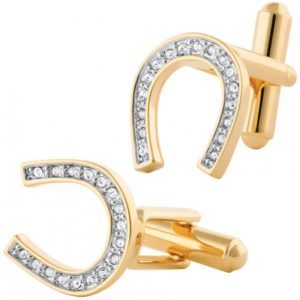
Lapel pins are becoming almost as popular as a boutonniere, and I can see why. I think they’re kind of cool.

If your cowboy is going to wear a hat, it absolutely must have a spiffy hat band.

My personal favorite is the vest. I just think they look great on a guy.

So, what happens when we put them altogether? Maybe something along the lines of this? Yeah, I do have a tough job, having to do all that research. No, don’t feel sorry for me 
February 1, 2019
WRITING ISN’T SUCH A SOLITARY EXPERIENCE




You’ve probably heard writers bemoaning that writing’s a solitary experience. And most of us would agree — and disagree. While it’s true that a lot of the time we’re holed up by ourselves, pecking away at the keyboard when we’re not staring off into space, we’re often gathered with our “tribe members”. And, no, those strangers surrounding us in the coffee shop while we watch the blinking cursor on our laptop screens don’t count.
For me, my tribe members can be found at my local Romance Writers of America chapters, workshops, booksigning events, and conferences. Though, I admit, we spend most of our time together discussing industry news and trends, sharing marketing tips, and expounding on our current work in progress. Not writing.
The only actual writing I’ve ever done with others are brainstorming sessions and my regular critique group, which may or may not count. A few times a year, I meet with one or more writer friends and hash out book ideas. And for fifteen years now, my critique group has met every two weeks and edited each other’s pages.
But I’ve never actually sat down and written with others until now. For a while, I’d been hearing about write-ins and thought I’d give it a try. Basically, you meet with other authors in a specified location (restaurant, coffee shop, library, etc.) and you sit together and quietly write. I even have one friend who does this long distance via Skype.
Why a write in? I suppose it seems a waste of time, driving somewhere just to sit and quietly write — there’s none of that networking and chit-chat like at meetings or conferences. But it works for some, and I’m giving it the old college try. There’s structure and habit to these write-ins. They force me to set aside a specific period of time to write. There’s also accountability, which is a huge plus. I’m easily distracted and tend to check email or Facebook. Write-ins force me to stay on task. And reporting how many pages I wrote at the end of the session is a bit like stepping on that scale at Weight Watchers. I like that accountability aspect.
Not sure this will become a regular practice for me. Time will tell. But, for now, working beside a kindred spirit a few times a month is a nice change of pace from the hours alone in my home office.
The post WRITING ISN’T SUCH A SOLITARY EXPERIENCE appeared first on Cathy McDavid.
December 7, 2018
Fun Wedding Trivia
Researching is part of a writer’s job. Most of the time it’s fun, we tend to write about what interests us so we find the research fascinating. It was no different for me when it came to finding interesting facts about weddings for my November release, A COWBOY’S CHRISTMAS PROPOSAL. I learned all kinds of wedding history and trivia from the wacky to the wonderful. And I actually got to use some of it in my book!
A few of the more expected things you’ll see in my Sweetheart Ranch series are, of course a canine ring bearer, vow renewal ceremony, live-streaming a wedding, and an elderly couple marrying. Did you know that rain on a wedding day is considered good luck in Hindu tradition? Well, I used that, too.
Maybe some less expected things I wrote into the book were a groom and his groomsmen riding up to the ranch house on horses while his bride and her maids were delivered in a horse-drawn carriage. I also used a bride and groom on horseback during the ceremony with their horses also wearing bride and groom wedding costumes.
I admit to “borrowing” an idea from a post on Facebook about a parapalegic man walking down the aisle using an robotic exoskeleton. I admit, that one brought a tear to my eye. I also had a former servicewoman with scaring from third degree burns over a large portion of her body marry the love of her life. Yeah, more tears. And then there was the musician couple musician couple who sang their vows rather than recite them.
Did you know that Egyptians are believed to be the first culture to exchange rings of love? They also believed a vein or nerve ran directly from the ring finger to the heart. Speaking of the Egyptians, during their weddings, the bride was pinched by female guests for good luck. Here are a few more interesting wedding facts:
1) The English believe a spider found in a wedding dress means good luck.
2) Ancient Romans studied pig entrails to determine the luckiest time to marry.
3) The reason brides wear veils is because the Greeks and Romans believed a veil protected the bride from evil spirits.
4) The custom of tiered wedding cakes is from an old game where the bride and groom attempted to kiss over an ever-higher cake without knocking it over.
5) In many olden cultures, the groom often kidnaped the bride, and the groom’s friends would help him, leading to the modern-day groomsmen.
6) The groom always stood to the right of the bride so that his right hand—or his sword hand—would be free to fight/defend a jealous rival.
7) Scholars believe the word “honeymoon” comes from the Teutonic custom of newlyweds hiding out and drinking hydromel (fermented honey and water) for 30 days until the moon next waned.
Not sure how I can use these in my future Sweetheart Ranch books, but you never know. Inspiration may strike, or a truly weird moment!
Cathy McDavid
Fun Wedding Trivia

Researching is part of a writer’s job. Most of the time it’s fun, we tend to write about what interests us so we find the research fascinating. It was no different for me when it came to finding interesting facts about weddings for my November release, A COWBOY’S CHRISTMAS PROPOSAL. I learned all kinds of wedding history and trivia from the wacky to the wonderful. And I actually got to use some of it in my book!
A few of the more expected things you’ll see in my Sweetheart Ranch series are, of course a canine ring bearer, vow renewal ceremony, live-streaming a wedding, and an elderly couple marrying. Did you know that rain on a wedding day is considered good luck in Hindu tradition? Well, I used that, too.
Maybe some less expected things I wrote into the book were a groom and his groomsmen riding up to the ranch house on horses while his bride and her maids were delivered in a horse-drawn carriage. I also used a bride and groom on horseback during the ceremony with their horses also wearing bride and groom wedding costumes.
I admit to “borrowing” an idea from a post on Facebook about a parapalegic man walking down the aisle using an robotic exoskeleton. I admit, that one brought a tear to my eye. I also had a former servicewoman with scaring from third degree burns over a large portion of her body marry the love of her life. Yeah, more tears. And then there was the musician couple musician couple who sang their vows rather than recite them.
Did you know that Egyptians are believed to be the first culture to exchange rings of love? They also believed a vein or nerve ran directly from the ring finger to the heart. Speaking of the Egyptians, during their weddings, the bride was pinched by female guests for good luck. Here are a few more interesting wedding facts:
1) The English believe a spider found in a wedding dress means good luck.
2) Ancient Romans studied pig entrails to determine the luckiest time to marry.
3) The reason brides wear veils is because the Greeks and Romans believed a veil protected the bride from evil spirits.
4) The custom of tiered wedding cakes is from an old game where the bride and groom attempted to kiss over an ever-higher cake without knocking it over.
5) In many olden cultures, the groom often kidnaped the bride, and the groom’s friends would help him, leading to the modern-day groomsmen.
6) The groom always stood to the right of the bride so that his right hand—or his sword hand—would be free to fight/defend a jealous rival.
7) Scholars believe the word “honeymoon” comes from the Teutonic custom of newlyweds hiding out and drinking hydromel (fermented honey and water) for 30 days until the moon next waned.
Not sure how I can use these in my future Sweetheart Ranch books, but you never know. Inspiration may strike, or a truly weird moment!
The post Fun Wedding Trivia appeared first on Cathy McDavid.
October 18, 2018
Boxes of Free Books – a good problem to have
I’m lucky that my publisher sends me lots of copies of my books. Not only do I receive boxes of my current release, but I also get more boxes when my previous titles are re-released. This has happened as many as three different times, giving me multiple versions of the book. Here’s the cover of the latest re-issued my publisher sent me:
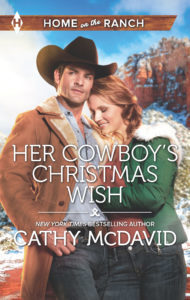
Which raises the question, what’s a person to do with all these free print book? It’s a good problem to have, but still a problem. I like giving them away and frequently do on my Facebook page. Unfortunately, the mailing can be a little cost prohibitive. I’ve also used them at local bookfests, offering buyers two for one deals: my current book plus a free one. This has worked pretty well.
My best approach, however, has been carrying around a box of books in my car and handing them out whenever and wherever I see an opportunity. For instance, the senior center my mom attends has a free library. They get a copy of every release my publisher sends me. If I spot one of those “little libraries” in a person’s front yard, I stop and put a book in. Once in a while I’ll be chatting with a person who mentions they love reading romance. My reply is, “Here, have a book.” Now and then I ship a box to writer’s groups for their local conference goodie bags. I’ve donated copies to women’s shelters, military people serving overseas, and my public library up the street gets all my books, too. I usually insert a flyer or postcard in the book, hoping that the person receiving the book will like it and check out my other titles.
One of my funnier book giveaway stories happened a few years ago. My BFF and I went to the airport to pick up another good friend who was flying in for a visit. I drove, and we parked in the garage so that we could meet our friend inside the airport. When we got back to my car, we immediately realized one of the tires was flat. Well, I’ve never changed a tire, don’t know how. As it turned out, neither had my friends. We were debating what to do, call my husband or roadside assistance, when a young, attractive couple passed us on the way to their car. They asked if we needed help and before we knew it, the woman — who happened to be dressed in very nice work clothes — was on the concrete ground changing my tire with the skill of a Discount Tire employee. The man, he was wearing a business suit, laughed apologetically. With a bit of embarrassment he admitted that he’d never changed a tire before. Join the club.
Needless to say, I was impressed. When she refused to take any money, I asked her if she liked to read romances. At her yes reply, I dove into the back of my SUV and pulled out different three books, giving them to her. She was thrilled. Heck, I was thrilled. My tire was changed in a matter of ten minutes.
I also swore I would learn how to change a tire. Okay, confession time. I never did. Sigh. But if you run into me anywhere and I happen to have my car nearby, ask me for a book. I’ll gladly give you one.
Warmest wishes to you and yours,
Cathy McDavid
Like me at: facebook.com/cathymcdavidbooks
Follow me at: twitter.com/cathymcdavid or bookbub.com/authors/cathy-mcdavid or amazon.com/author/cathymcdavid
The post Boxes of Free Books – a good problem to have appeared first on Cathy McDavid.
September 12, 2018
Working from Home – Dream Job or Worst Nightmare?
Almost four years ago, I made the decision to leave the corporate world and write full-time. It wasn’t easy, in fact it was a bit scary. There’s something reassuring about receiving that paycheck every two weeks without fail. I also lost several important benefits like employer paid health insurance and (generous) employer contributions to my retirement plan.
Even so, I don’t regret making the move. Writing full-time was a dream of mine for many years. Still, it isn’t all rainbows and unicorns. For every positive, there’s a negative. Here’s a short list:
Pro: Somewhat flexible hours (I do try to keep a schedule but it’s not cast in stone).
Con: People are convinced I don’t have a “real job” and fail to understand why I’m not available whenever they happen to need something. Yes, this includes my husband. Sigh….

Pro: No boss telling you what to do and constantly peering over your shoulder.
Con: No one keeping you on track, it’s easy to procrastinate or become distracted.
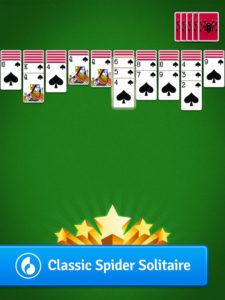
Pro: No annoying coworkers to deal with.
Con: Cabin fever — gets lonely sometimes with only the dog and cat for company.

Pro: Save money on gas and an office wardrobe.
Con: Shopping for yoga pants and t-shirts with funny sayings isn’t nearly as much fun as shopping the sales at Dillards for smart looking, trendy outfits and cool shoes.

Pro: I love, love, love what I do. I wake up every morning excited about my current project, whatever that is.
Con: Wait, there is no con for this one. I’m a very lucky person, I have the best job in the world. Nothing beats that.
No, I wouldn’t trade writing from home for a return to the corporate world even though the dog and cat are bored with my constant one-sided conversations and my Tuesday Zumba class can be the most social interaction I have all week. Now, if you’ll excuse me, there’s a good looking cowboy who needs my attention at the moment. Seems he and this pretty but stubborn gal he’s fallen in love with can’t seem to work out their problems.

The post Working from Home – Dream Job or Worst Nightmare? appeared first on Cathy McDavid.
June 11, 2018
Contrived Conflict Leaves Me Grinding My Teeth
In my opinion, even the best authors have a periodic clunker. It’s unavoidable, no one’s perfect. And while I’m more than willing to overlook this particular dud from Author-I-Enjoy (it won’t stop me from reading future books of hers), I was deeply frustrated while reading and had to push myself to finish multiple times.
Is the writing bad? No, not at all. Is the storyline good? Yes-ish (I’ve seen this one from her and others before). Are the characters compelling? Yes-ish (again, seen them before). But, hey, it’s all in the execution. I can read similar stories, just like I watch similar TV shows or movies, because I really like the author’s voice and style and the fresh take they bring to the telling.
My particular teeth-grinding complaint with this book is the contrived conflict, both external and romantic. We authors have it hammered into our heads that the various conflicts in a romance book (external, internal, romantic) must be organic to the story and not something manipulated by the author through their writing. For example, in the book I’m currently reading, Author-I-Enjoy often, and I mean often, has the hero withhold information from the heroine for no apparent reason. She demands to be told of something important that very likely affects her safety. He refuses to tell her only because “she doesn’t want to know.” We, the reader, don’t know, either. And a vague reference to the information being terrible or difficult to handle isn’t enough for me. I need the hero to have a better reason for withholding it in order for me to accept his refusal to tell. Without it, I’m thinking he’s kind of a jerk.
Another example of contrived conflict in this book is when Author-I-Enjoy has the heroine, who’s clearly an intelligent woman (a doctor and head of a practice), act completely out of character by doing something incredibly stupid. Risking her life kind of stupid. Repeatedly (didn’t she learn the first time?). Yet a third example is when Author-I-Enjoy cuts off a scene ending just as a character is about to make a revealing statement. Yeah, you say, that’s a common technique, postponing a big reveal a little longer. I agree. But please don’t prolong it forever. Author-I-Enjoy never gets back around to the information. Never. Other characters in the book have obviously been told. Not the reader, however. Grrr...
Many years ago, a fellow author told me that it’s okay for a character to do just about anything as long as the author sufficiently motivates them. Sage advice. I think I might have liked this book better if Author-I-Enjoy had done that. Plain old motivation would have taken the contrived conflict and turned it into believable conflict — all with just a few sentences. And kept me the reader engaged and enthralled.
Contrived Conflict Leaves Me Grinding My Teeth
Okay, so I just finished reading a book by an author I always enjoy and sometimes downright love. She’s prolific, and I’ve probably read thirty-five or forty of her books. By far my personal most read author.
In my opinion, even the best authors have a periodic clunker. It’s unavoidable, no one’s perfect. And while I’m more than willing to overlook this particular dud from Author-I-Enjoy (it won’t stop me from reading future books of hers), I was deeply frustrated while reading and had to push myself to finish multiple times.
Is the writing bad? No, not at all. Is the storyline good? Yes-ish (I’ve seen this one from her and others before). Are the characters compelling? Yes-ish (again, seen them before). But, hey, it’s all in the execution. I can read similar stories, just like I watch similar TV shows or movies, because I really like the author’s voice and style and the fresh take they bring to the telling.

My particular teeth-grinding complaint with this book is the contrived conflict, both external and romantic. We authors have it hammered into our heads that the various conflicts in a romance book (external, internal, romantic) must be organic to the story and not something manipulated by the author through their writing. For example, in the book I’m currently reading, Author-I-Enjoy often, and I mean often, has the hero withhold information from the heroine for no apparent reason. She demands to be told of something important that very likely affects her safety. He refuses to tell her only because “she doesn’t want to know.” We, the reader, don’t know, either. And a vague reference to the information being terrible or difficult to handle isn’t enough for me. I need the hero to have a better reason for withholding it in order for me to accept his refusal to tell. Without it, I’m thinking he’s kind of a jerk.
Another example of contrived conflict in this book is when Author-I-Enjoy has the heroine, who’s clearly an intelligent woman (a doctor and head of a practice), act completely out of character by doing something incredibly stupid. Risking her life kind of stupid. Repeatedly (didn’t she learn the first time?). Yet a third example is when Author-I-Enjoy cuts off a scene ending just as a character is about to make a revealing statement. Yeah, you say, that’s a common technique, postponing a big reveal a little longer. I agree. But please don’t prolong it forever. Author-I-Enjoy never gets back around to the information. Never. Other characters in the book have obviously been told. Not the reader, however. Grrr…
Many years ago, a fellow author told me that it’s okay for a character to do just about anything as long as the author sufficiently motivates them. Sage advice. I think I might have liked this book better if Author-I-Enjoy had done that. Plain old motivation would have taken the contrived conflict and turned it into believable conflict — all with just a few sentences. And kept me the reader engaged and enthralled.
The post Contrived Conflict Leaves Me Grinding My Teeth appeared first on Cathy McDavid.
May 22, 2018
Searching for Good Looking Cowboys
We writers spend a lot of time online looking up stuff. Often, we search out pictures and photographs for inspirations. Places, clothing, buildings, events, and, of course, characters. I like to find pictures of people who resemble what I imagine my hero and heroine look like and keep those pictures handy while I work on the book.
Seeing as I write contemporary westerns, I’m frequently Googling “good looking cowboy”. Many of the images that come up are what you’d expect and what I’m looking for. Like this one:

Then, there are pictures of cowboys I wouldn’t exactly call “good looking” and not what I had in mind for hero inspiration. (seriously, what’s with the cat?)


While this isn’t the kind of cowboy I was looking for, he’s certainly cute and maybe good for hero inspiration thirty years down the road.

Other pictures that pop up don’t have anything to do with the kind of cowboys I write.



Tell me, why do animal pictures always appear in my searches? They have nothing to do with good looking cowboys, either — though they are funny.
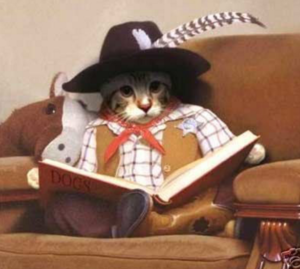

Then there are the pictures that truly confound me  I can’t begin to fathom why these come up in my search for cowboys.
I can’t begin to fathom why these come up in my search for cowboys.

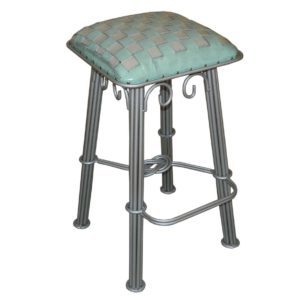
Well, I’m through playing around online. Time to get serious and crank out a few pages. Wait….is that a picture of Scott Eastwood that just appeared?
The post Searching for Good Looking Cowboys appeared first on Cathy McDavid.
March 18, 2018
Tell Me the Difference Between Sweet and Clean Romances
Recently, a friend expressed her displeasure at Amazon listing her book as “a clean romance” — a tag they included after her title. I asked her why this upset her, not to be difficult but because I was genuinely curious. She writes for a line that is known for being wholesome, as in no sex, no swear words, no violence, no taboo subjects, etc.
Her response was that she preferred the term “a sweet romance” as opposed to clean. To her, adding “a clean romance” beside her book title felt like censorship while calling it “a sweet romance” felt more like identifying the book as a sub-genre (much like many consider erotic romance a sub-genre, along with suspense or historical or paranormal).
I see her point, but as with everything, there are two sides to consider. A tag can help readers immediately identify what they’re buying. A reader looking for a wholesome read will be confident they don’t mistakenly purchase a book containing elements they find distasteful or offensive. On the other hand, a reader interested in edgier reads will search elsewhere and not be disappointed.
Then again, it’s usually pretty clear what level of “heat” the reader is in store for from all the clues. For instance, the title (Her Hot Demon Lover vs. Her Heart’s Treasure), the cover art (a half naked man vs. a fully clothed woman carrying a bouquet of flowers), the teasers or quotes (“a sizzling read” vs. “a feel good read”) or, lastly, the back cover blurb (she meets a super sexy, mysterious man who promises to fulfill all her secret fantasies vs. will she ever trust him again after suffering his deep betrayal).
I did some research online in an attempt to discover the difference between “sweet” and “clean” romances, if any, and found some interesting posts by writers. One person called sweet romances immature and claimed they ignored an integral part of life, that part being sex. Okay, as an author of both sexy and sweet romances, I admit to being a little offended. I do believe that sex is an integral part of any healthy romantic relationship. However, when a couple chooses to engage in sex is their decision, whether in fiction or real life. Waiting until marriage or some other meaningful commitment isn’t immature, it’s a personal choice. Relationships can be equally deep and meaningful whether the couple engages in premarital sex or not.
Another individual stated that clean romances were those where the bedroom door closes and sweet romance were those with no more than kissing. Yet another person defined the difference as the exact opposite. Confusing, yes? I agree.
I’ve come up with my own answer to the question for the next time the subject comes up. For me personally, sweet romances emphasize the developing romantic relationship, focusing on the emotional conflicts standing between the couple and their struggle to overcome those conflicts. Love scenes have no more physical intimacy than kissing. They can be tender or a bit more intense but always with undeniable sexual undercurrents which are gently stated rather than explicit. The characters can have ugly or traumatic pasts, such as abuse or rape or addiction, but none of that takes place in the here and now. Mild curses like damn are acceptable if used in moderation and not gratuitously.
Clean romances (or any genre for that matter) go further in that they have no swear words whatsoever and no physical intimacy other than chaste kissing. There is also no violence, taboo subjects, and nothing a reader might possibly find offensive. Physical attraction between couples is only hinted at. Think Hallmark movies or traditional regency romances.
When it comes to my author friend who doesn’t like the tag Amazon has stuck on her book, in my opinion she’s right to be upset. Her book is genuinely sweet rather than clean — at least according to my definitions. Plus, doesn’t sweet sound nicer?
The post Tell Me the Difference Between Sweet and Clean Romances appeared first on Cathy McDavid.



